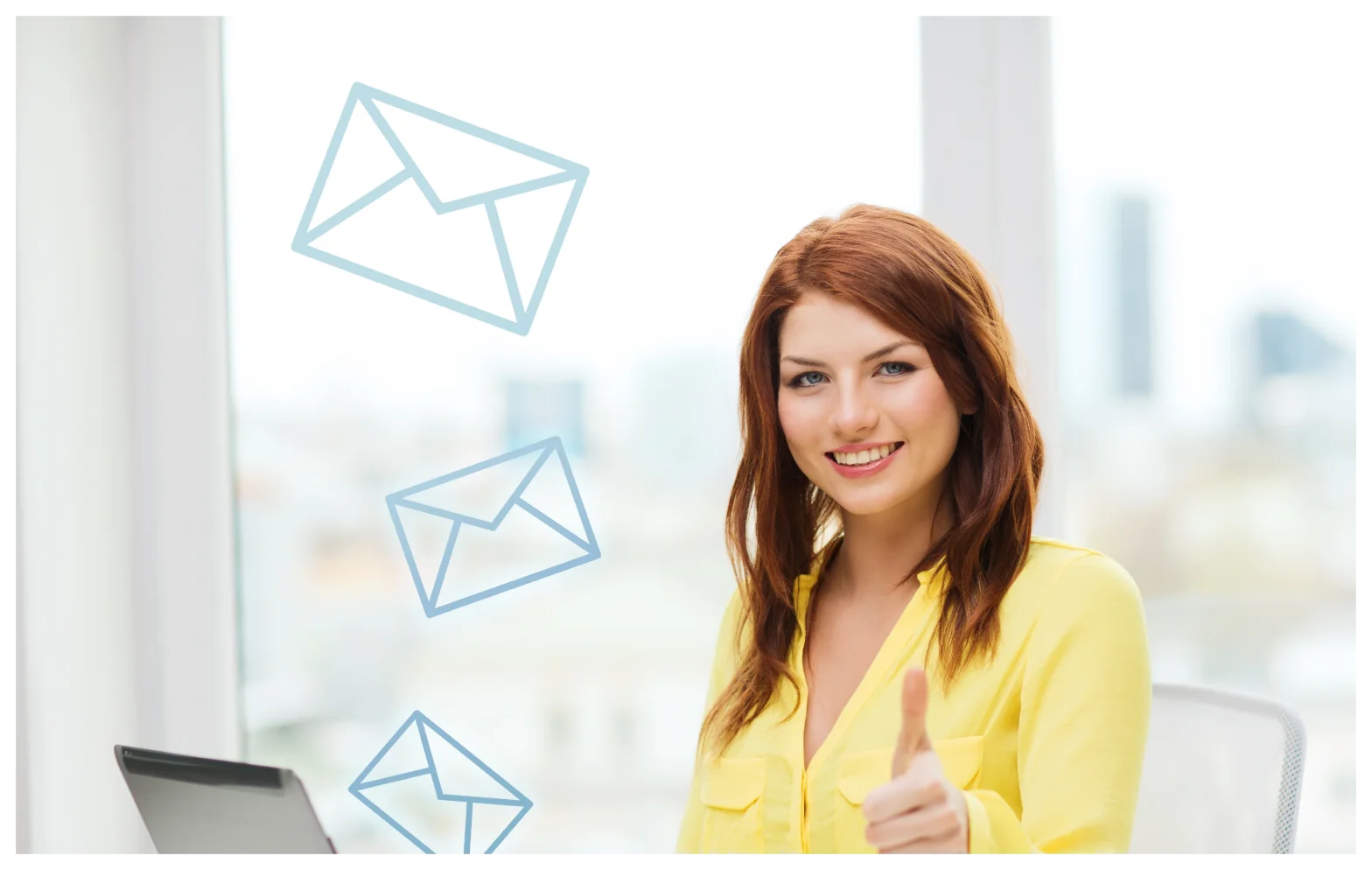
Introduction
Are you unable to convert your prospects often?
Many marketers use pre-built email templates and scripts while reaching out to their prospects. These aren’t always tailored to your audience’s needs.
Another problem?
Not following up with the prospects at regular intervals.
When you’re into outbound sales, you need to engage with your prospects multiple times before they make a purchase. In business, it’s called sales cadence.
It is a crucial step to nurture your prospects and close a deal.
What’s more, your sales cadence should be designed to move leads along the funnel effectively. It’s a concept that can help you design effective email marketing campaigns as well.
In this guide, we’ll see how to establish a sales email cadence to grow your business.
What Is An Email Cadence?
Email cadence refers to the process of sending out emails at the right time with optimal frequency to your target audience. If done well, it can help you increase your email engagement.
The trick is in understanding your audience’s behavior and gauging when it is the right time to send a follow-up email. That way, you can nurture the leads in your email cadence.
While there are no set of rigid rules for designing an email cadence, you can follow some best practices.
A Step-by-Step Guide on Email Cadence
If you design a perfect sales email cadence, you can get the most out of your email marketing efforts. In this section, let’s check out how you can design the best one for your business.
Step 1: Define Your Goals
Before you begin working on your email cadence, the first step is to understand your goals.
You may be looking to generate leads or drive traffic to your website. Alternatively, you could also want to boost your sales or build long-term relationships with your prospects.
Invest some time in understanding your goal clearly. If you don’t know what you want to achieve, it’s challenging to come up with a strategy.
Step 2: Understand Your Prospects
When you reach out to your prospects, it’s vital to personalize your message rather than sending the same emails to everyone. If you send impersonal, mass-emails, don’t expect to get conversions.
To send personalized emails, you need to gather information about your prospects. The more information you have, the better results you’re likely to receive through the email cadence.
Wondering how to create compelling, personalized emails?
One of the easiest ways to understand your prospects is to identify their personality by asking the following questions:
- Which type of product or service are you looking for?
- Are you using any other similar products or services?
- How did you find our company?
- What’s your budget?
Additionally, you need to research your prospects’ needs, pain points, and preferences. Once you understand what they want, you can send more relevant promotions and newsletters.
Step 3: Segment Your Audience Based on Engagement
Sending emails to prospects that aren’t interested or listening to you is just a waste of time, and you’re likely to witness insignificant results.
If you send an email to your subscriber list, and you receive an open rate of 1% – that’s not great at all.
Relevance is the key to creating a winning email strategy.
So, you should send out emails only to those prospects who show interest in your product or service.
Once you recognize the most and least engaged audience, you can build an excellent strategy for your email cadence.
Step 4: Identify the Frequency of Sending Emails
In email marketing, there’s no set standard to decide the frequency of sending emails. It differs based on your niche.
To find the best frequency for your business, you need to check out what others in your industry are doing.
Are they sending messages twice a week or more? Finding this will help you get a ballpark figure to go by.
Remember that it may take some trial-and-error before you find out what fits your niche and prospects.
No matter what your email frequency is, you should always give your subscribers an option to unsubscribe from the mailing list.
After all, no one likes a business that spams them.
This step is important to create a lead nurture cadence that actually works for you.
Step 5: Measure Results
In email marketing, it’s essential to measure results regularly, but it becomes quite a challenge when dealing with a high number of prospects. It gives you an idea of which strategy is working for you and which one isn’t.
To make the tracking process more manageable, you can use specialized email marketing platforms and CRM tools.
With them, you can find out your email rate, open rate, click rate, bounce rate, and other vital metrics.
If you are serious about designing a sales email cadence, you won’t be able to optimize it without measuring the progress.
Example of An Email Cadence
Want a better idea of how to plan your email cadence?
Let’s look at an example of a sales cadence that you can send to an executive-level person.
Day 1: Introductory Email
Find out the recipient’s designation and organization to add a personal touch to the first email in your sequence.
“Hi {first_name},
As you’re the {job_title} for your company, you seem like the best person to speak with.
At {our company}, we work with business owners like yours to help you grow your revenue.
[List all the services you provide]
{first_name}, would you like to discuss more?
Cheers!”
Day 2: Pitch a Specific Product or Service
Here, you have to send an email highlighting how a specific service that you offer can help prospects in their industry.
The crux of the email should be something on the lines of:
“We can help your business to be more visible through smarter outreach using Google and Facebook ads.
If you are interested, we can schedule a demo call.”
Day 5: First Follow-Up Email
In the first follow-up email, you should only understand whether the prospect is interested in your product/service.
So, you need to send a short and crisp email.
“Did you get a chance to check our previous email? We think we can help you grow your business through [ mention service].
We can get on call this week for more details.”
Day 7: Second Follow-Up Email
To win their trust, you can showcase testimonials and case studies. Social proof can go a long way in moving them along the sales funnel.
Day 9: Third Follow-Up Email
You’ve given them social proof. To encourage them to engage with you, you can offer a free trial or consultation. You can even offer your products or services at a discount rate.
Day 11: Final Email
This will be your last email as sending more emails may frustrate your prospect.
“We’ve tried reaching you many times, but we still haven’t received a response.
Do let us know if you are still interested in our product/service.”
Why You Should Automate Your Sales Email Cadence
Now, you know how to design a sales email cadence.
But there’s a huge barrier if you want to send it out in scale.
It requires too much time and effort.
For example, let’s say, you want to reach 100 prospects every day. That’s around 3000 prospects each month.
If you have a multi-touch cadence model, it’s going to be exhausting to keep up.
That’s why you need to leverage email automation.
If you are on the fence about it, check some of the benefits of email automation:
- Boost Your Efficiency: With automation, you can run your email cadence on autopilot. You’ll also be notified whenever a prospect opens or replies to your email.
- Get Detailed Insights –Email marketing automation tools provide insightful data to improve your email cadence’s overall efficiency.
They also let you track the engagement metrics to know what content your prospects are engaging with.
Pro Tip: To automate your sales cadences, you can use a platform like Klenty. It lets you automate your emails with a hint of personalization.
Wrapping Up
An email cadence, like other marketing approaches, lets you increase your brand awareness, visibility, and ultimately boosts sales. A well-designed email cadence can help you take your business to the next level.
Use the strategies discussed above, and watch your conversion rate rise.
In case you’re not achieving your target results, you can tweak and refine your email to reach a concrete solution.
Still, if you’re unable to design a sales email cadence for your product, feel free to ask us in the comment section below.
Our blog
Latest blog posts
Tool and strategies modern teams need to help their companies grow.

Running a business comes with its own set of challenges, especially when it comes to ...

AI is surely a futuristic concept but it evolves today, particularly in sales and mar...

A successful webinar requires more than just a great speaker and a compelling topic. ...







